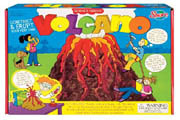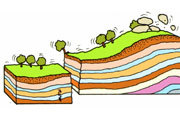Tsunami is Japanese for "harbor wave" but a lot of people call them tidal waves. However, Tsunamis have nothing to do with the tide. They are destructive, giant waves that pack enough energy to smash towns to pieces and take the unprepared with them. Tsunamis are triggered by volcanic eruptions (above and below ground), landslides, earthquakes and even asteroids or comets.
Tsunamis - How Do They Happen?
The most common cause of tsunamis is when the seafloor buckles because of an undersea earthquake. The waves can travel at speeds up to 600 miles per hour in the open sea - fast enough to keep up with a jetliner. They can reach heights of up to 100 feet in shallow coastal waters. The waves can continue to pound the coastline for several hours with many hours between each wave.
Tsunamis - Tragedy Strikes Japan
On March 11, 2011 a ferocious tsunami triggered by one of the largest earthquakes ever recorded slammed Japan’s eastern coast, sweeping away people, cars and homes. The magnitude-8.9 offshore quake unleashed a seven-metre tsunami and was followed for hours by more than 50 aftershocks, many of them of more than magnitude 6.0. A magnitude 6.6 earthquake also struck the central part of the country after the first huge quake hit offshore. Japan’s huge earthquake brought the super-modern city of Tokyo to a standstill, paralyzing trains that normally run like clockwork and stranding massive crowds of people who couldn't even use their cellphones because of power outages.
Tsunamis - Tragedy Strikes Asia
A tsunami with waves that reached up to 32 feet (10 meters) high, hit more than nine different Asian countries in late December 2004. The countries affected included Sri Lanka, India, Thailand and Indonesia. Sri Lanka was the hardest hit with approximately 1.5 million people displaced from their homes. Due to the magnitude of damage, it has been impossible to get a definitive number on the victims of this tragedy, but officials estimate that more than 200,000 people died as a result of the tsunami. Aid agencies like the Red Cross appealed for donations during the months following the natural disaster and continue to help those in the affected areas.
Tsunamis - The Deadly History
In the Pacific, there were 17 tsunamis between 1992 and 1996 that took approximately 1,700 lives. The deadliest recorded tsunami in history, before the 2004 Indian Ocean incident, happened after the Krakatoa Volcano erupted in 1883, in Indonesia. About 36,000 died from the eruption and resulting tsunamis. Hawaii has seen 13 significant tsunamis, mostly from earthquakes along the edge of the Pacific basin. A 55 foot wave hit the Big Island and a 54 foot wave hit Molokai in 1946, followed by a 53 foot wave hitting Kauai in 1957.
Previous to 2004, the last Pacific-wide tsunami happened in 1964 in Alaska when an earthquake occurred in Prince William Sound. The result was four giant waves that destroyed towns and cities as far as Crescent City, California. The waves reached 20 feet high and traveled at 500 miles per hour. The earthquake, that was rated 8.4 on the Richter scale, caused a total of 120 deaths including 11 who died in Crescent City.

































